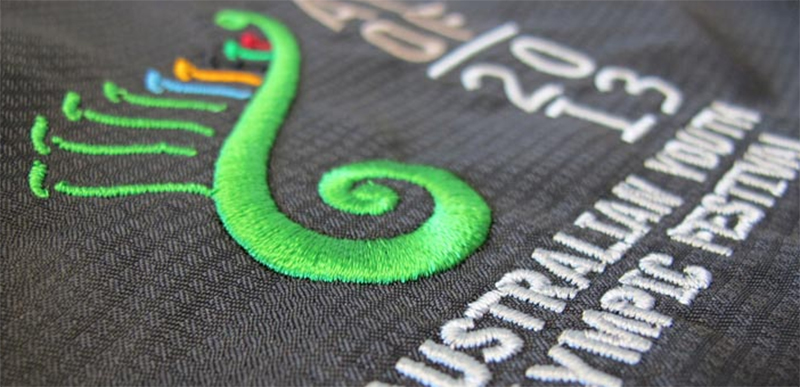Finding The Perfect Fit For Your Embroidery Design
When you’re working on digitized embroidery designs, size matters! Whether you’re personalizing a shirt, jacket, or bag, ensuring that your design fits just right can make a world of difference. The key to nailing that perfect size lies in understanding and using an embroidery size chart effectively. But how exactly can you adjust your designs using these charts, and why is it so important to get the sizing spot on?
Why Size Matters In Embroidery Design
Think of your favorite shirt or cap with embroidered details. If the design is too big, it can dominate the item, making it look overwhelming. If it’s too small, the intricate details can get lost, and the design might not stand out at all. This is where an embroidery size chart becomes your best friend.
With custom digitized embroidery designs or pre-made templates, size is key. It must be just right. This ensures your work looks polished and professional. An embroidery design size guide helps you avoid mistakes. It prevents designs from being stretched, distorted, or awkwardly positioned on fabric.
The Basics Of Using An Embroidery Size Chart
An embroidery size chart offers guidelines for how big your design should be depending on the surface you’re working on. These charts often show measurements for items like t-shirts, hoodies, hats, and more. The size guide will usually include recommended height and width dimensions for each type of item.
Here’s an example of how an embroidery size chart might look:
| Item Type | Recommended Size (Width x Height) |
| T-shirt (center front) | 3″ x 3″ – 4″ x 4″ |
| Hat (front panel) | 2″ x 2″ – 2.5″ x 2.5″ |
| Hoodie (back) | 10″ x 10″ – 12″ x 12″ |
| Bag (front pocket) | 4″ x 4″ – 5″ x 5″ |
Once you have your embroidery design size guide, it’s easier to digitize your designs or resize existing ones so they match the item you’re working on.
Steps To Adjust Designs For Different Sizes
So, how do you adjust your machine embroidery designs to fit the size you need? Follow these simple steps to get your digital embroidery designs just right:
1. Measure The Surface
Before making any adjustments, measure the item where your design will go. Use a ruler or measuring tape to find the maximum area available for embroidery. This step ensures your design won’t be too large or too small.
2. Refer To The Size Chart
Once you have your measurements, compare them with an embroidery size chart to find the ideal size for your project. The chart will give you a good starting point and help you determine whether your design needs to be resized.
3. Use Design Software For Resizing
Next, you’ll need to use embroidery software to adjust your digitized embroidery designs. If you’re using digitizing machine embroidery designs, use programs like Wilcom, Hatch, or even free tools like Ink/Stitch. They let you easily resize the design while keeping its quality.
Simply input the desired size (from the chart) and adjust your design accordingly. Keep the proportions balanced. Stretching or shrinking a design without its aspect ratio can cause distortions.
4. Test The Adjusted Design
Before embroidering on your final product, it’s always a good idea to run a test stitch. Use scrap fabric to check how the design looks at its new size. This will help you ensure the stitching, details, and positioning are all perfect.
Common Issues When Resizing Embroidery Designs
Resizing custom digitized embroidery designs can be tricky. It isn’t always as easy as you might hope. Here are some common problems people face when adjusting their digital embroidery designs and how to fix them:
- Loss of detail: When designs are resized too small, intricate details can get lost. To avoid this, simplify your design before shrinking it. Remove unnecessary lines or details that won’t show well at smaller sizes.
- Distortion: Stretching a design without keeping its proportions intact can lead to a distorted or stretched look. Always lock the aspect ratio when resizing your digitizing machine embroidery designs.
- Density issues: If you shrink a design, you may need to reduce the stitch density. Otherwise, the fabric might pucker or become too stiff.
- Thread breaks: When increasing the size of a design, make sure the stitch length is appropriate. Too-long stitches can cause thread breaks during embroidery.
Helpful Tips For Embroidery Size Adjustments
Adjusting machine embroidery designs can sometimes feel tricky, but here are a few expert tips to make the process smoother:
- Stay within recommended size limits: Most embroidery size charts will give a maximum and minimum size for each item. Stick within these ranges to avoid design or stitching issues.
- Balance simplicity with complexity: The larger your design, the more detailed it can be. For smaller designs, simplify as much as possible to keep them looking sharp and clear.
- Keep your thread in mind: When resizing designs, also consider the thread you’re using. Thin thread works better for small designs, while thicker thread is ideal for larger projects.
When To Ask A Professional For Help
While resizing digitized embroidery designs is something you can do on your own, there are times when it’s best to call in a professional. If you’re struggling with complex, custom-embroidered designs, professional services can help. These experts can ensure your design looks flawless and fits perfectly on your chosen surface.
Making The Perfect Adjustment Every Time
Adjusting embroidery designs for size doesn’t have to be a daunting task. With the right tools, a reliable embroidery design size guide, and a bit of patience, you can make sure your designs fit just right, no matter the project. Whether you’re working on a small hat logo or a large jacket back, the process is simple when you break it down step by step.
If unsure about your adjustments or the look of your machine embroidery designs, test them or consult a pro. Your final product will thank you, and you’ll be proud of how professional and polished it looks.
Mastering the art of resizing your machine embroidery designs opens endless creative possibilities. So, grab your embroidery size chart, get resizing, and enjoy watching your designs come to life!
A Final Thought To Stitch It All Together
In the end, using size charts is key. It will ensure your embroidery projects look great and fit perfectly on any item. This skill is essential. It will help you, whether a beginner or expert, to stitch your creative vision into reality. And remember, the right tools and knowledge—like your trusty embroidery design size guide—make all the difference.
Also
The Importance of Cleanrooms in the Cosmetic Industry
Related: How Does Assignment Help Assist You In Improving Academic Writing?



